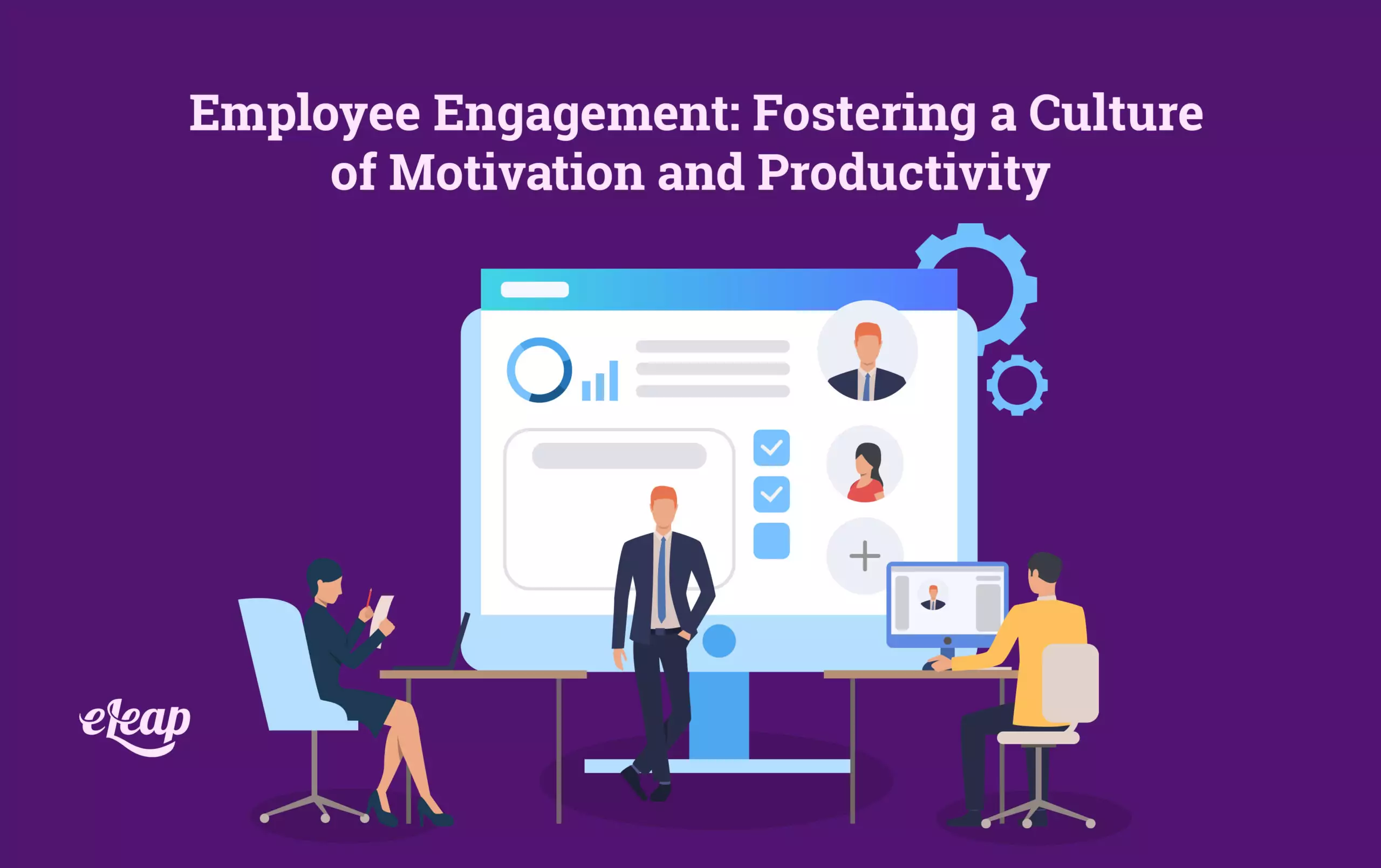Employee Engagement Fostering a Culture of Motivation and Productivity

Employee engagement is critical to creating a positive work environment and driving organizational success. It refers to the level of commitment, enthusiasm, and dedication employees have toward their work and the company’s overall goals. In addition to being satisfied with their jobs, engaged employees are highly productive, display high levels of productivity, and play an active role in the organization’s success. As we explore employee engagement in depth in this article, we will highlight its importance and provide practical strategies for engaging employees.
Introduction: Understanding Employee Engagement
Employee engagement encompasses employees’ emotional and intellectual connection with their work and the organization. It goes beyond job satisfaction and involves a sense of purpose, fulfillment, and dedication. Engaged employees are enthusiastic about their roles, strive for excellence, and willingly go beyond their job descriptions.
The Benefits of Employee Engagement
Employee engagement brings numerous advantages to both employees and organizations. Engaged employees tend to be more productive, innovative, and proactive. They are more likely to stay with the company for the long term, reducing turnover and associated recruitment costs. Additionally, engaged employees contribute to a positive work culture, inspiring their colleagues and creating a motivating environment.
Factors Affecting Employee Engagement

Several factors influence employee engagement. Understanding these factors is crucial for organizations to develop effective strategies for fostering engagement. The following are key elements that impact employee engagement:
3.1 Leadership and Management
Strong leadership and effective management practices are vital in promoting employee engagement. Supportive leaders who provide clear direction, regular feedback, and growth opportunities are more likely to have engaged teams.
3.2 Communication and Transparency
Open and transparent communication channels foster trust and engagement. It is more likely that employees will feel connected to the organization and its goals when they feel informed and involved in decision-making.
3.3 Organizational Culture
A positive organizational culture that values teamwork, collaboration, and mutual respect increases employee engagement. When employees feel a sense of belonging and purpose within the organization, they are motivated to give their best.
3.4 Career Development and Growth Opportunities
Providing employees with professional growth and advancement opportunities is crucial for fostering engagement. When individuals see a clear career path and have access to training and development programs, they feel valued and motivated to excel.
3.5 Work-Life Balance
Engaged employees maintain a healthy work-life balance. Organizations prioritizing employee well-being by offering flexible work arrangements and promoting a healthy work-life balance tend to have more engaged employees.
Measuring Employee Engagement
Various methods can be employed to determine the level of employee engagement within an organization. Employee surveys, focus groups, and performance metrics are commonly used to assess engagement levels. By collecting and analyzing data, organizations can identify areas of improvement and develop targeted strategies.
Strategies for Improving Employee Engagement
Boosting employee engagement requires a proactive approach. Here are five effective strategies that organizations can implement:
5.1 Enhancing Communication Channels
Establishing clear and open lines of communication is crucial. Regularly share updates, encourage feedback, and ensure employees feel heard and valued
5.2 Providing Recognition and Rewards
Recognizing and appreciating employees’ contributions through rewards, incentives, and public acknowledgments fosters a sense of pride and motivates continued engagement.
5.3 Promoting Work-Life Balance
Encourage work-life balance by offering flexible schedules, remote work options, and wellness initiatives. Supporting employees’ well-being contributes to higher engagement levels.
5.4 Offering Career Development Opportunities
Investing in employee growth and development through training programs, mentorship, and advancement opportunities demonstrates a commitment to their long-term success and boosts engagement.
5.5 Fostering a Positive Organizational Culture
Create a positive work environment by nurturing a culture of trust, collaboration, and inclusivity. Encourage teamwork, celebrate diversity, and promote a sense of belonging among employees.
The Role of Leadership in Employee Engagement
Leaders play a crucial role in driving employee engagement. They must lead by example, inspire their teams, and actively support their professional growth. Influential leaders create a vision, communicate it clearly, and empower their employees to contribute to the organization’s success.
Employee Engagement Best Practices
To foster a culture of engagement, organizations can adopt the following best practices:
- Foster transparent communication at all levels.
- Encourage employee feedback and act upon it.
- Provide opportunities for continuous learning and development.
- Recognize and reward exceptional performance.
- Establish a supportive work environment that values work-life balance.
- Promote collaboration and teamwork.
- Encourage employee autonomy and decision-making.
Conclusion
Employee engagement is a crucial aspect of organizational success. When employees are engaged, they are more productive, committed, and satisfied in their roles. Organizations can create a thriving work environment and achieve their business objectives by prioritizing employee engagement through effective leadership, communication, and supportive practices.
FAQs
How can organizations measure employee engagement?
Organizations can measure employee engagement through surveys, focus groups, and performance metrics. These tools help assess employee satisfaction, motivation, and commitment.
What are the benefits of employee engagement?
Employee engagement brings numerous benefits, including increased productivity, reduced turnover, improved morale, and positive work culture.
What role does leadership play in employee engagement?
Employee engagement depends heavily on leadership. Influential leaders inspire, support, and provide growth opportunities, a culture of engagement within their teams.
How can organizations improve employee engagement?
Organizations can improve employee engagement by enhancing communication channels, providing recognition and rewards, promoting work-life balance, offering career development opportunities, and fostering a positive organizational culture.
Why is employee engagement critical?
Employee engagement is essential because it leads to higher productivity, increased employee satisfaction, reduced turnover, and a positive work environment.